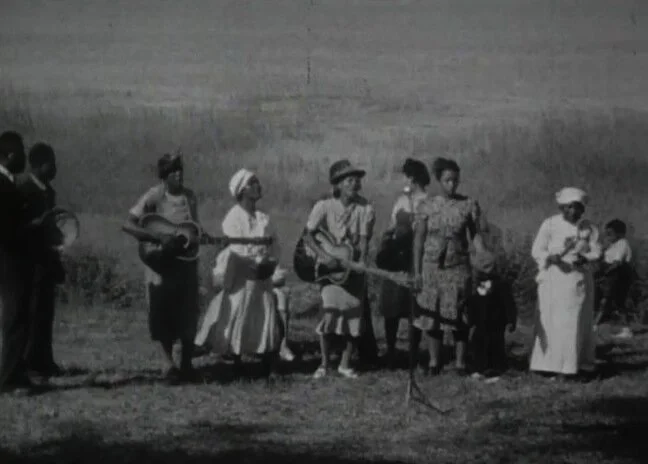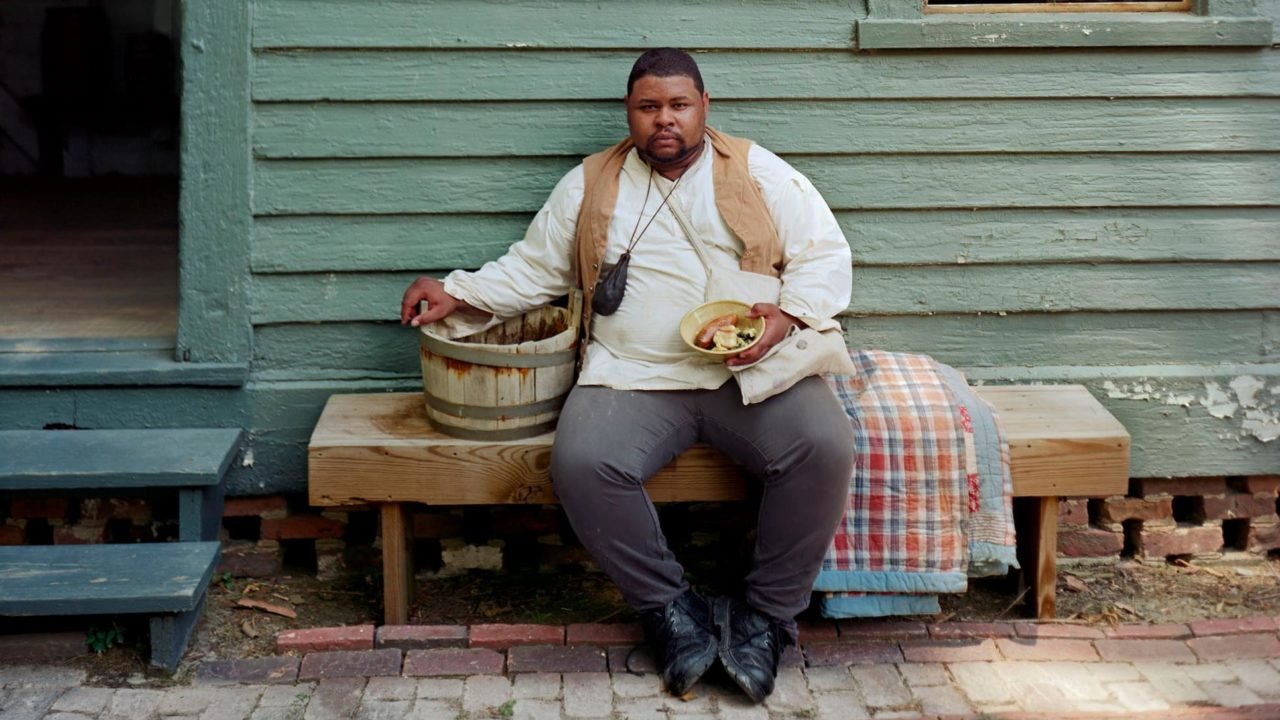What We’re Reading + Watching Vol. 2
We’re back with another edition of Black people with plants recommendations focused on film and literature. In this installment we’re focusing on 4 works of pure creativity and Black history. Enjoy! Please comment if you’ve either read or viewed these works.
Daughters of the Dust
Directed and produced by filmmaker Julie Dash in 1991, Daughters of the Dust is a historical cinematographic masterpiece. It is also the first feature film by a Black woman to have a theatrical release.
Set in 1902, the film tells the story of a Gullah Geechee family on one of the Sea Islands, off the coast of Georgia as they prepare to migrate to the mainland. Beyond its richness in history, it illuminates the connection between a family, spirituality, and culture. The Peazant family is a matriarchal family with Nana Peazant at the center. She keeps their ancestors’ African culture and religious traditions alive. One of the main characters is the film’s backdrop, the island, the entire film is outdoors, in the woods and on the beach. Throughout the film, viewers are introduced to the family and experience their conflicting ideas about migration.
An excerpt from Julie Dash’s interview on rogerebert.com about the legacy of Daughters of the Dust:
Just take a look at it. Hopefully they will get something from it. Something that moves them in a way to learn more about their own family, their own history, their legacy. And to know that we’ve retained a lot of what our ancestors brought with them from Africa and there are a lot of wonderful things that we do everyday, today from that. Nothing really deep. Just a celebration of where you come from and who you are, and survival mechanisms that we employ over the years.
We highly recommend you view this film again and again. There are many more stories, histories, and traditions to discover while viewing Daughters of the Dust.
Cover Image: Gordon Parks, Boy with June Bug, Fort Scott, Kansas, 1963
Black Nature: Four Centuries of African American Nature Poetry
The first anthology to focus solely on nature writing by Black poets, Black Nature illuminates Black people’s deep connection to the natural world and its spirit. Throughout literary history, Black poets have written about the natural world, but it’s been viewed as political or historical.
Editor Camille T. Dungy, encompassed 180 poems from 93 poets with differing, unique perspectives on American social and literary history. Black Nature helps expand the readers ideas of what constitutes nature writing.
Featured poets include: Phillis Wheatley, Rita Dove, Yusef Komunyakaa, Gwendolyn Brooks, Sterling Brown, Lucille Clifton, Natasha Tretheway, and Douglas Kearney. The cover image features a photograph by Gordon Parks, entitled Boy with June Bug, Fort Scott, Kansas, 1963.
An excerpt from an NPR interview with Camille T. Dungy:
“There are so many things that were about sustenance,” Dungy says. “If we look at history and say, well, Black people can only write about the natural world and think about slavery or think about being a runaway, you forget that other component — that there has always been promise and survival in the natural world. That some people knew where to look and how to look. And so that is as much part of these poems: the hope and the potential for a real connection and collaboration, as much as this devastating and horrible history, is there.”
Still image from Zora Neale Hurston’s Fieldwork footage.
Zora Neale Hurston’s Fieldwork Footage
As a Columbia University student of anthropologist Franz Boas, Zora Neale Hurston set off on a journey along River Road through New Orleans to Florida. Between 1927 and 1929, with a 16 mm camera in hand Hurston told the story of Black rural life, the communities, the landscapes, and the traditions.
Most known for her book, Their Eyes were Watching God, acclaimed Harlem Renaissance writer Hurston was also an anthropologist and ethnographer. These short films and her upbringing informed much of her writing as she documented Black people’s connection to the land, folkloric customs, work songs, spirituals, and the language of the rural South.
The majority of the footage illustrates Black Floridian life - the everyday of going to work, sitting on the porch, children playing, socializing, and baptisms. Hurston also sings traditional songs some from her childhood as the soundtrack of the almost 7 minute short film.
What a treasure to have this footage by Zora Neale Hurston, a true preservation of Black rural life. We can use this film from the past to inform us in the present and for the future.
View some of the footage here.
Cover Image: Johnathan Lewis for Michael Twitty
The Cooking Gene: A Journey Through African American Culinary History in the Old South
Michael W. Twitty, a renowned culinary historian provides a unique perspective on race through the lens of Southern cuisine and food culture. In his memoir, Twitty traces his ancestry - both Black and Jewish - from Africa to America, slavery to freedom. The Cooking Gene is more than just a memoir it’s a telling of Southern history - from its roots in Africa, the violence and brutality, and the beauty and soulfulness of Southern Black cooking. Throughout the book, Twitty incorporates recipes.
An excerpt from Michael W. Twitty’s article on Afroculinaria about lessons learned writing The Cooking Gene:
Food has meant working in historical and cultural spaces that are really challenging to Black mental health and contemporary identity from the big house kitchen to the contemporary urban dining room. The inherent vulnerability you have to have to do this work and the fear that it is marketing our traumas is more repulsive and problematic to Black folks now than ever before. This is happening simultaneously as Black folks in America get more interested in genealogy and finding their family’s place in the bigger global narrative.
What is it about the times we are living in that makes people far more reticent to rehearse and relate stories of past oppression and resistance in the ways those of the past two generations? How can we achieve a better place where we can critique our experience in a brave new way? How do we tell our family stories now and in the future?
Food and Southern cooking is so deeply rooted in the land, from the seeds brought over, braided in enslaved Africans hair during the Transatlantic Slave Trade to seeds sown in sacred slave gardens, from Black gardens in the past, present and future growing produce for sustenance and community.




